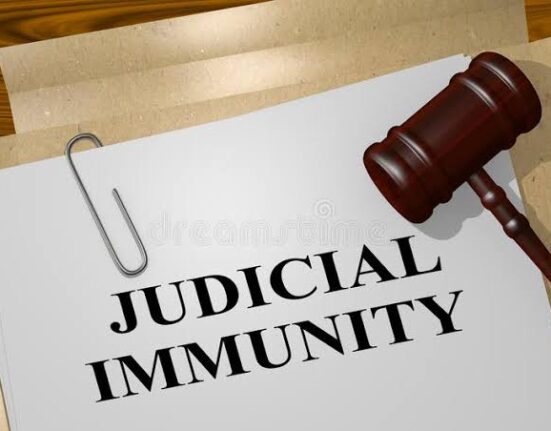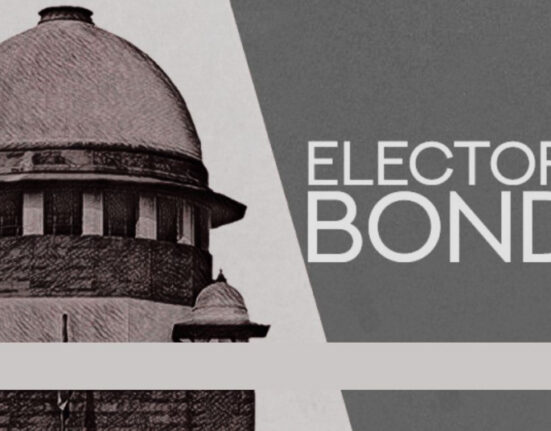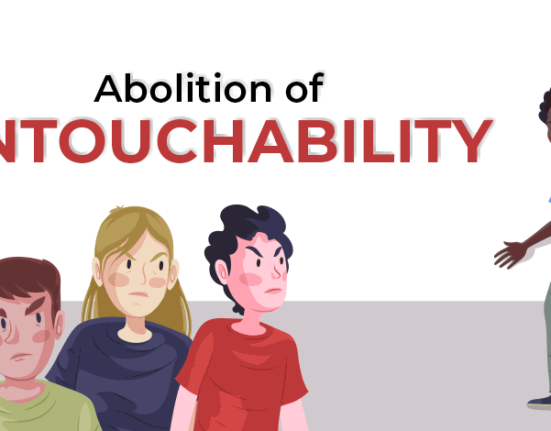Drishti Suji, a 4th-year student from Vivekananda Institute of Professional Studies (VIPS) has written this Article”Internet Ban and Censorship in India”.
INTRODUCTION
What can be accessed, published, or watched on the Internet may be legally restricted or suppressed through internet censorship. Censorship most frequently affects internet domains. It incredibly might also cover all resources on the Internet that are outside the filtering state’s territorial control. Information that can be made available online may also be restricted by internet censorship. Businesses that offer internet access, including schools and libraries, may decide to block access to content that they deem unwanted, offensive, improper for children, or even unlawful. These businesses may do this ethically rather than through censorship.
The ability to publish or access information on the internet is basically controlled or limited by internet censorship. Internet filtering is frequently used by governments and other organizations to restrict access to sensitive or damaging content as well as to the information that is protected by copyright.
From one nation to the next, different levels of Internet censorship exist. While some nations have some degree of Internet censorship, others go so far as to restrict access to material like news and stifle citizen debate. Elections, protests, and riots are just a few examples of events that might prompt or lead to internet censorship.
Internet censorship takes place in one of two ways:
Top-down censorship occurs when an authority orders service providers what to obstruct. Certain regulations may call for the censorship of types of content. Users have no input and no control over what they may access.
Self-imposed censorship is related to people or organizations choosing what content to avoid. For instance, an individual can opt not to visit specific websites because they are conscious that their government will censor the content, rendering it undependable.
PROS AND CONS
Pros
- Censorship guards against social disagreement by preventing the dissemination of unwanted material.
- The government can employ censorship to restrict access to harmful activities by restricting their public display, among other things. It can also be used to prevent the spread of incorrect beliefs or rumors. Internet filtering can screen out undesirable content online. It shields kids from frightening websites that feature child pornography, sexual assault, and detailed how-to guides for committing crimes or using drugs.
- Internet filtering can contribute to the preservation of social harmony and public security.
Cons
- There are many different definitions of morality, taste, and disgust, which go against the constitution’s guarantee of free speech. So, this level of tight censorship is in direct conflict with the constitutional guarantee of everyone’s right to free speech and expression in India. However, it is subject to certain reasonable restrictions.
- Instead of focusing on more important social issues, the practical execution of the censorship legislation may end up turning into a tool of moral policing that regulates other people’s lives.
INTERNET CENSORSHIP IN INDIA
In case of an emergency, such as a protest against the government, opposition to a new law, or an election. The central government and state governments of India have the authority to impose a ban on internet services in any area of Indian territory. In India, the central and state governments are not required to request permission from any Indian court. They can impose an internet ban on their own. Instead, they are free to do so directly or by asking all licensed ISPs (Internet Service Providers) to filter or remove specific content or to impose an outright ban on all internet users.
Freedom on the Net 2012 report analysis:
- India ranks 20th out of the 47 nations that were considered for the 2012 study. India scored 39 on a scale from 0 (most free) to 100 (least free). In the 2011 study, India was placed 14th out of 37 countries.
- Before 2008, the Indian government only sometimes and infrequently censored online content. The Information Technology Act was amended by the Parliament in the wake of the terrorist attacks in Mumbai in 2008. This attack left 171 people dead. These changes increased government censorship and monitoring power.
- With the implementation of the modified ITA in late 2009. The pressure on private enterprises to remove content that is thought to jeopardize public order or national security has intensified. Private service providers, such as ISPs, search engines, and cybercafés, must abide by government blocking requests or face up to seven years in prison. Businesses must have dedicated workers to handle these requests.
- Online posters have sporadically been prosecuted, and private content-hosting businesses are required by law to provide useful information to law enforcement.
- The Supreme Court declared in 2009 that website moderators and bloggers may be subject to libel lawsuits and even criminal prosecution for comments made on their pages.
HOW DOES CENSORSHIP WORK IN INDIA?
The process of censorship is carried out by the relevant authority or an authorized entity.
In India, censorship is practiced both directly and indirectly through a variety of laws and agencies. It includes the Cinematograph Act 1952, the Cable Television Act, the Central Board of Film Certification, and the Press Council of India.
Code of Criminal Procedure:
Section 95 of the Cr.P.C. permits the confiscation of specific publications and content.
If any newspaper, book, or document, wherever printed, includes any information that the State Government deems injurious to the state. It is penalized by the State Government via an official notification issued under this provision.
This would enable a magistrate to issue search warrants for publications that are considered “objectionable.”
The Cinematography Act of 1952 established the Central Bureau of Film Certification (CBFC), a statutory organization.
It controls what is included in movies that are made available to the public.
Films are subject to prior certification by the CBFC, and broadcasters are required to abide by the certification’s requirements by the “Program Code and Advertising Code” rules.
It allows for classification into the following four groups, i.e.
- The designation “U” stands for unrestricted exhibition.
- “UA” stands for unrestricted exhibition, except for children under the age of 12.
- The category of exhibition designated as “A” is one that is only open to adults.
- “S” refers to a category of movies that are only available to a certain group of individuals.
The Press Council Act passed in 1978, created the Press Council of India, a statutory and quasi-judicial organization.
It controls what enters the media domain and serves as the press’s self-regulatory organization.
This organization emphasizes the necessity for media professionals and journalists to practice self-regulation. It serves as a watchdog on media content, in general, to determine whether it violates press ethics and the needs of the public.
The Cable Television Networks Act:
This law further restricts the type of broadcast content that is permitted. The act requires cable operators to register voluntarily in order to keep track of them. It also establishes rules for the content that the cable operator may broadcast. It requires that all films, whether they were made in India or elsewhere, receive CBFC certification under the category “U” (i.e., Unrestricted Public Exhibition) before they can be broadcasted on cable television.
The “Cable Television Networks Regulations” developed according to this Act provide the government broad authority to prohibit cable operators, channels, or specific programs that contravene the established program code or guidelines.
New IT Regulations and Social Media Platforms, 2021:
Given the rapid rise of social media, censorship of it has become a rising issue in India because, until recently, it was not directly regulated or under the direct control of any government agency.
Nowadays, social media usage is governed by the Information and Technology Act, 2000. Sections 67A, 67B, 67C, and 69A contain the relevant regulatory provisions.
IT Regulations for 2021 (Intermediary Guidelines & Digital Media Ethics Code):
These were preceded by changes made to the “Allocation of Business Rules” under the IT Act, 2000. It placed control of digital and online media, including OTT (Over The Top) platforms like Amazon, Netflix, and Hotstar, under the Ministry of Information & Broadcasting (I&B), Government of India. This included films, audio-visual programs, news, and current affairs content.
New compliance and redressal methods for social media, OTT, digital news, and even messaging applications are included in the IT (Intermediary Guidelines & Digital Media Ethics Code) Rules, 2021, which are implemented following this amendment (like WhatsApp and Viber).
CONSTITUTIONALITY
It is obvious that press freedom is significant to our democratic process. It aims to advance public opinion and issues of public interest by disseminating information that helps people to make informed decisions. The Supreme Court also defended the dignity of the press and the freedom it enjoys by overturning attempts to restrain it in several cases.
Perhaps the first case where the issue of cinema censorship comes up is K.A. Abbas v. Union of India[1]. As the basic right to freedom of speech and expression guaranteed by Article 19(1)(a) of the Constitution. The Supreme Court in this decision carefully considered crucial issues relating to the pre-censorship of cinematograph films. In this case, the petitioner contested the Board of Film Censors’ decision to deny a “U” certificate for his movie “A Tale of Four Cities”. The Central Government agreed to provide the “U” certificate while the Supreme Court was hearing the case in exchange for the movie receiving a few edits.
The court had to decide on the following two matters:
- Pre-censorship cannot be accepted in and of itself under the right of speech and expression
- Even if it were a valid limitation on freedom. It must be used in accordance with extremely specific guidelines that forbid arbitrary action.
Considering all of these, Hidayatullah, C.J. clarified that pre-censorship of films was constitutionally allowed in India. Also that it was a reasonable restriction falling under the purview of Article 19(2). However, it was noted that pre-censorship was merely a component of censorship. But censorship must not be used in a way that unreasonably restricts the right to free speech.
Therefore, the Supreme Court ruled that imposing pre-censorship on a newspaper, as held in the Brij Bhusan case, or prohibiting the newspaper from publishing its own views, as held in the Virendra case, or banning the entry of publications and their circulation, as ruled in the Sakal Papers case and the Romesh Thapper case, or attempting to impose constraints in some other way, as ruled in the Express Newspaper case and the Bennett and Coleman case, was an infringement on A 19 (1) (a).
The Supreme Court has ruled in all of the aforementioned cases that press freedom cannot be curtailed. Furthermore, it is not acceptable to subject the media to laws that restrict or obstruct freedom of speech and expression.
In terms of cinema censorship, censorship is necessary due to the films’ widespread popularity, their style of presentation, and most importantly the impression they have on viewers, both young and old. According to Article 19(1)(a) of our Constitution, one is free to express their ideas using any medium one chooses.
CONCLUSION
The film, a crucial medium for the presentation of ideas and unrestrained thought, must be free from all forms of censorship. The fundamental right to express one’s opinion in the community of civilized societies must not be restricted in any way. The practical realities of the society in which such ideas are spread must also be kept in mind. The process of expressing one’s opinions should not compromise the peace and security of the community. Given that cinema can have an impact on society. So care must be taken when screening the movie to prevent any form of disruption and threat to the country’s security.
The freedom of free speech and the obligation to uphold social peace must coexist in harmony. The Certification Board must examine a film objectively and with consideration for the compatibility between the right to free speech and the maintenance of peace and security in society.
Also Read: Fundamental Rights Under Indian Constitution. Click Here!
[1] (1970) 2 SCC 780 Available Here!
![]()







Leave feedback about this